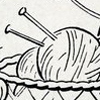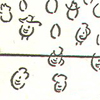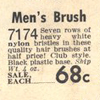Advertising has been described as the lubricant of the free enterprise system. Some argue that only the power of advertising makes it possible for entrepreneurs to successfully introduce so many new products. And further, that as sales increase through advertising efforts, fixed costs of production and retail prices decrease, making a wide variety of goods available to much of the population. In response critics have highlighted the cost to the economy of the enormous financial expenditures devoted to the promotion of competing and often very similar products, and questioned whether many of these ‘new’ products do genuinely contribute to long-term health or social happiness. . 
Until the late 19th century commercial advertising was typically rather restrained and mostly the province of retailers and wholesalers. Many early printed ads can be likened to politely phrased announcements of the availability and prices of products. Beginning in the 1880s there was a tremendous growth in the number of North American manufacturers of brand name consumer goods including cigarettes, soaps and beauty products, and canned and packaged foodstuffs. The original purpose of brand names was to evoke safety or quality. Advertising soon began to associate brands with additional characteristics, such as prestige, luxury, youth, vitality, femininity, masculinity and sex appeal.
 Commercial advertising can be placed by both manufacturers and retailers of products. It can have several objectives. Some ads may be introducing a completely new product to the market. Some may attempt to persuade readers to try an established product for the very first time. Other advertisements seek to maintain brand loyalty. Commercial advertising can be placed by both manufacturers and retailers of products. It can have several objectives. Some ads may be introducing a completely new product to the market. Some may attempt to persuade readers to try an established product for the very first time. Other advertisements seek to maintain brand loyalty.
 In prairie Canada, commercial advertising has used every medium that proved cost effective in pressing home its messages. The formats of radio, television, daily newspapers and printed flyers are well suited to the promotion of widely needed personal and household products, basic foodstuffs and mass market entertainments. Other print formats may more successfully target those people able to buy high-end luxury products, including jewelry, furniture and vacations in exotic locations. In prairie Canada, commercial advertising has used every medium that proved cost effective in pressing home its messages. The formats of radio, television, daily newspapers and printed flyers are well suited to the promotion of widely needed personal and household products, basic foodstuffs and mass market entertainments. Other print formats may more successfully target those people able to buy high-end luxury products, including jewelry, furniture and vacations in exotic locations.
 The formats and techniques employed in prairie advertising reflect developments across North America. One distinctive regional feature may be the popularity of shopping from mail-order catalogues. Another may be the appeals to the co-operative spirit and to support for local Canadian ownership utilized by the many successful consumer co-operatives across the prairie provinces. The formats and techniques employed in prairie advertising reflect developments across North America. One distinctive regional feature may be the popularity of shopping from mail-order catalogues. Another may be the appeals to the co-operative spirit and to support for local Canadian ownership utilized by the many successful consumer co-operatives across the prairie provinces.
 Restrictions on Canadian advertising vary from decade to decade. Ads for tobacco products were very common in newspapers and magazines in the 1950s and 1960s; such advertising is now illegal. Ads for contraceptive devices and female hygiene products, now very common, were once forbidden. The promotion of alcoholic beverages and drinking establishments follows changes in public opinion and government policy. Restrictions on Canadian advertising vary from decade to decade. Ads for tobacco products were very common in newspapers and magazines in the 1950s and 1960s; such advertising is now illegal. Ads for contraceptive devices and female hygiene products, now very common, were once forbidden. The promotion of alcoholic beverages and drinking establishments follows changes in public opinion and government policy.
The commercial gallery includes a wide range of advertisements drawn primarily from backfiles of prairie farm magazines and from The Sheaf, the University of Saskatchewan student newspaper.
|






